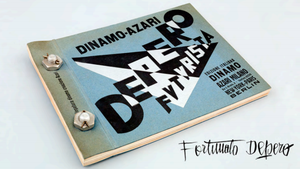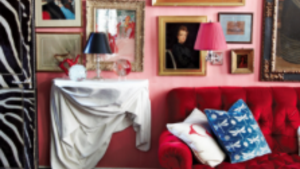In his book Inner Spaces, San Francisco-based interior designer Paul Vincent Wiseman dissects his design process, expalining his holistic approach that emphasizes attention to detail and superior craftsmanship.
The founder of The Wiseman Group also discusses select projects in the book in special lectures, such as one titled “Mindful Design and the Art of Storytelling,” presented at Carlton Hobbs Antiques in New York City last October.
In both the book and the lecture, Wiseman conceptualizes home decorating as something primal, “the long body of our memory,” rooted in human beings since the time of cavemen and cave paintings. Just as cave painters had to fit their works within the confines established by the “architect”—the cave itself, modern designers too must take their cues from the architect’s larger vision. For this reason, the Wiseman Group’s process involves “a tribe,” partnering with the architect, the client, the landscape designer and others as necessary, but keeping the architect’s vision as the core.
For Wiseman, design is not about the products used, or even the end result as the product, but rather the process of design itself and how that process tells a larger story about the inhabitants. People love art, objects, antiques and contemporary art because it provides a unique reflection of themselves, according to Wiseman. To seamlessly incorporate this idea into their concepts, the team undertakes months of research all over the world, and that research is reflected in the planning process, to create a vision so complete that even the designs on moldings are painstakingly crafted.
Details from various projects by The Wiseman Group.
Another part of the Wiseman Group’s process is the way in which it utilizes and remakes antiques. It is not uncommon for projects to require aged items be updated and altered, a process Wiseman describes as “balancing what they are with what they could be.” He also often commissions pieces to be crafted in the style of different periods to tie a room together or match an existing piece of furniture. For Wiseman, when mixing periods it’s all about “quality and sculptural value.”
Editor at Large asked Wiseman a few questions about how to refresh antique pieces and make a living space double as a work of art in its own right:
When making new pieces based on antiques, classical or period designs, what is that process like?
My philosophy is reproductions should never look like reproductions. There are very few manufacturers that can accomplish it effectively. We frequently work with Rose Tarlow and C. Mariani and we provide a lot of input along the way. I have longstanding relationships with both Rose and Claudio and we all know what a true reproduction finish should look like. If it’s too shiny, too antiqued, or too distressed, it’s never believable. I would rather use authentic pieces, but budgets do not always permit, so you have to take the extra time to make them the anchoring piece in a room. Achieving a realistic-looking reproduction is a process that requires your involvement. You cannot simply rely on someone else to do it for you.
"Framing" a room and using furniture as sculpture are two themes that appear in both the lecture and the book. How do you identify “sculptural” furniture?
I always tell my team to look at the way a piece of furniture sits. No matter if it’s a chair or a secretary, ask yourself: “Does it sit lightly?” The legs should be like a good pair of shoes on a lady… they should make her sexy!
What are some things you look for in terms of the piece and the space you are planning on using the piece in?
It’s always about the relationship. If it’s a Spanish Colonial house, I look for Spanish Colonial furniture. If it’s a mid-century-referenced house, we look for a few period mid-century pieces. The days of all-period furniture are passé. One needs to be judicious and find the best period pieces that references the architecture of the home. We just finished a stunning Palm Springs home that is mid-century-referenced using a pair of 1950s Brazilian chairs to anchor the living room and a large sculptural 1960s chrome-and-wood table lamp in the library. Everything else in the home is new!
From a project in Marin County, California.
Clearly attention to detail plays a major role in your team’s process. What, in your opinion, is the most overlooked detail when people design rooms and homes?
First, having something that relates to whatever the architectural style of the house is. Second would probably be the stitching details. Decorating a room is like making a couture dress. The closer you look, the more you should see. Everything should be simpatico. Just look to nature for your clues!
Blending periods and designs is challenging but you manage it in such a way that nothing ever seems anachronistic. How do you achieve that balance?
It works best when the clients and I share a mutual passion and appreciation for antiques. Then, you can get pieces of furniture that are so unique and sculptural standing alone, yet they create a beautiful tension that allows them to still work together. I always prefer fewer high-quality pieces over more pieces of mediocre quality.
Similarly, the process of updating antiques without destroying the historical value of the piece and creating a seamless effect cannot be easy. Do you have a favorite object that has been updated in this way?
Oh yes! The most common challenge I face is converting cabinets to hide electronics. We recently converted a 17th century Italian cabinet to house a TV and stereo system. We had to create hand-hammered hinges and handles to make everything look the same. We save all the pieces that have been moved so the piece can be returned to its original state if desired. Most pieces have been altered along the way, so I have no problem doing it as long as you leave a clean trail and are respectful of their original intentions.
Why is it so important to conceptualize interior design as a process focused on space as a whole instead of individual details?
Well, it goes back to my philosophy of life: Everyone creates a container of consciousness. That is as big as they are at any given time. Your home is a great reflection of that containment. Hopefully it is done with enough room for your container – that consciousness – to grow!
Images by Matthew MIllman, excerpted from Inner Spaces. Courtesy of The Wiseman Group.





























